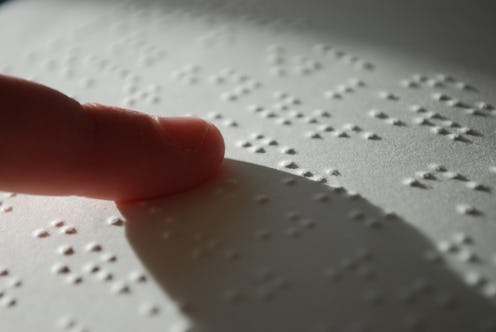Life
3D Art For The Blind

While blind people are able to read using braille, there is one thing they haven't been able to do: Enjoy visual art. All of that is changing now, though, thanks to one man who got a little creative. Photographer John Olson is using 3D printing that lets blind people experience art in their own way, thanks to a process that takes a two-dimensional image and gives it length, width, height, and texture. What's more, the images have built-in sensors which, upon being touched, provide audio to further explain the picture and enhance the experience.
"There are 285 million blind and sight impaired worldwide ... So our goal is to make this available at every museum, every science center, every institution, first in this country and then beyond," Olson, a former photographer for LIFE Magazine, explained recently to Reuters. Olson has been refining and perfecting this process for the last seven years; now, to grow and expand his efforts, he completed a Kickstarter campaign to raise funds and already has a show scheduled this year presenting 3D photos taken by blind photographers. It's a wonderful addition to the world of art, including people in something so magical that many of us easily take for granted.
While the Kickstarter campaign didn't quite raise the funding it aimed to, this adventure surely isn't over. In fact, the work of Olson's company, 3DPhotoWorks, has already been utilized by the likes of NASA, the Kennedy Space Center, and Cabela's. Writer and podcast host Romeo Edmead, who lost his vision when he was just 2 years old, got to experience the power and beauty of Olson's 3D work; and he described the experience as a new type of freedom.
"All my life we've all heard of famous painters and their works. But to me, that's all they were. They were like vocabulary words I could write down ... but I didn't necessarily know how to put a physical picture together. Something like this presents that opportunity, that freedom to get a better understanding," Edmead explained to Reuters, adding that having the option to touch the creations is a "whole different ball of wax." While the upcoming exhibit will be held at the Canadian Museum for Human Rights in Winnipeg, Olson already has plans to approach other American museums about opening exhibits for 3D works of art.
Mark Riccobono, President of the National Federation of the Blind (and partner to this process, dubbed 3D Tactile Fine Art Printing), says that "while sight is not a prerequisite for success, equal access to information is." And this certainly falls in line what the results of case studies previously conducted, when the visually impaired often said that this type of art gave them freedom, independence, and equality.
Images: Stefan Malmesjo/Flickr